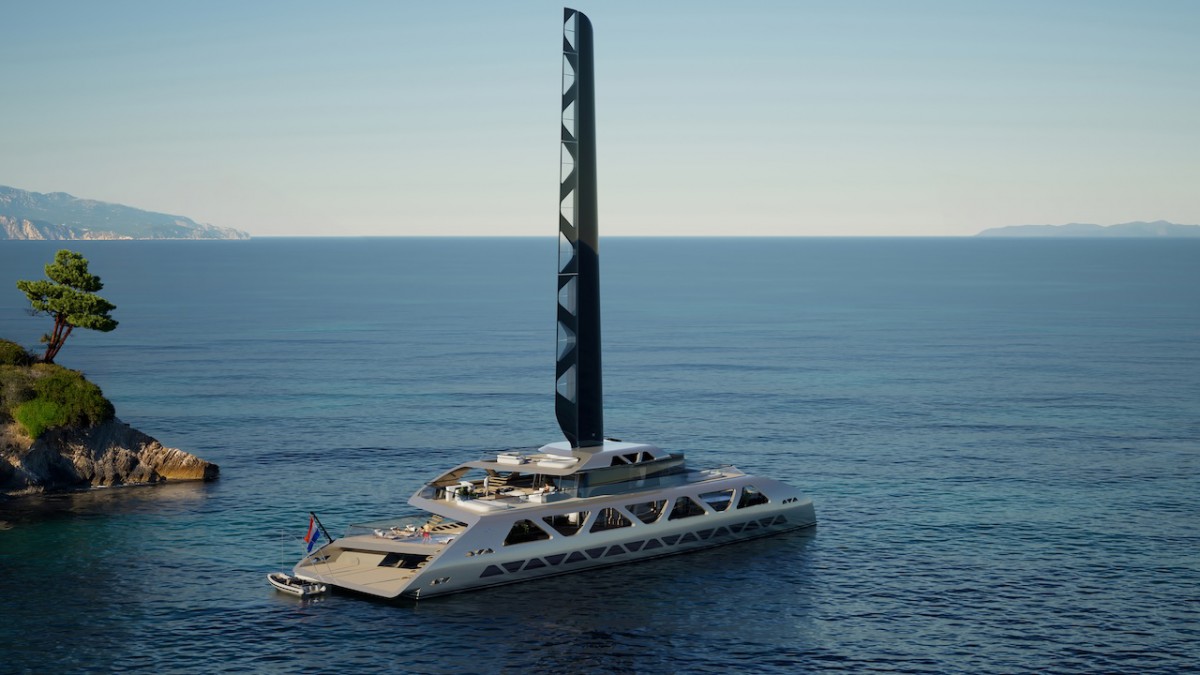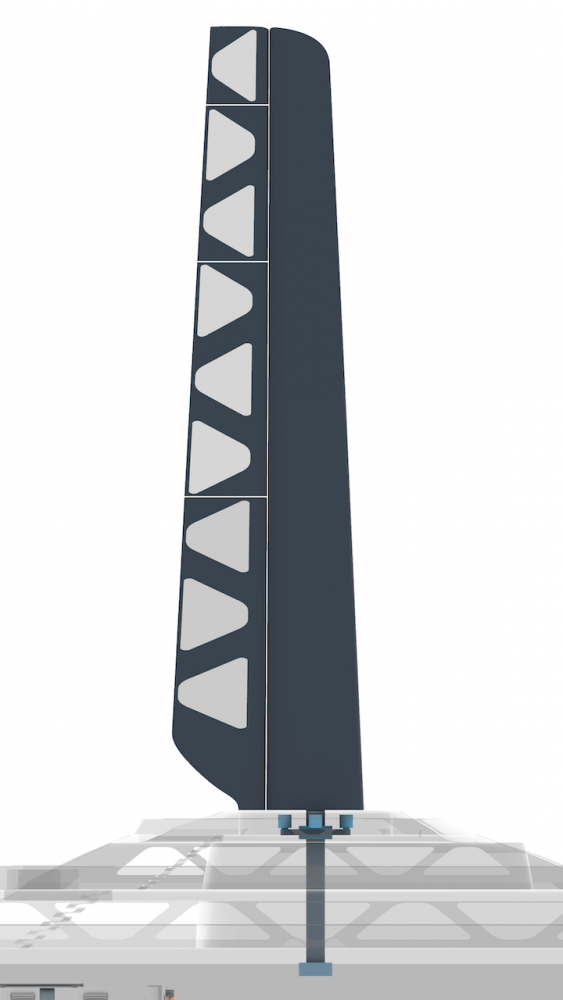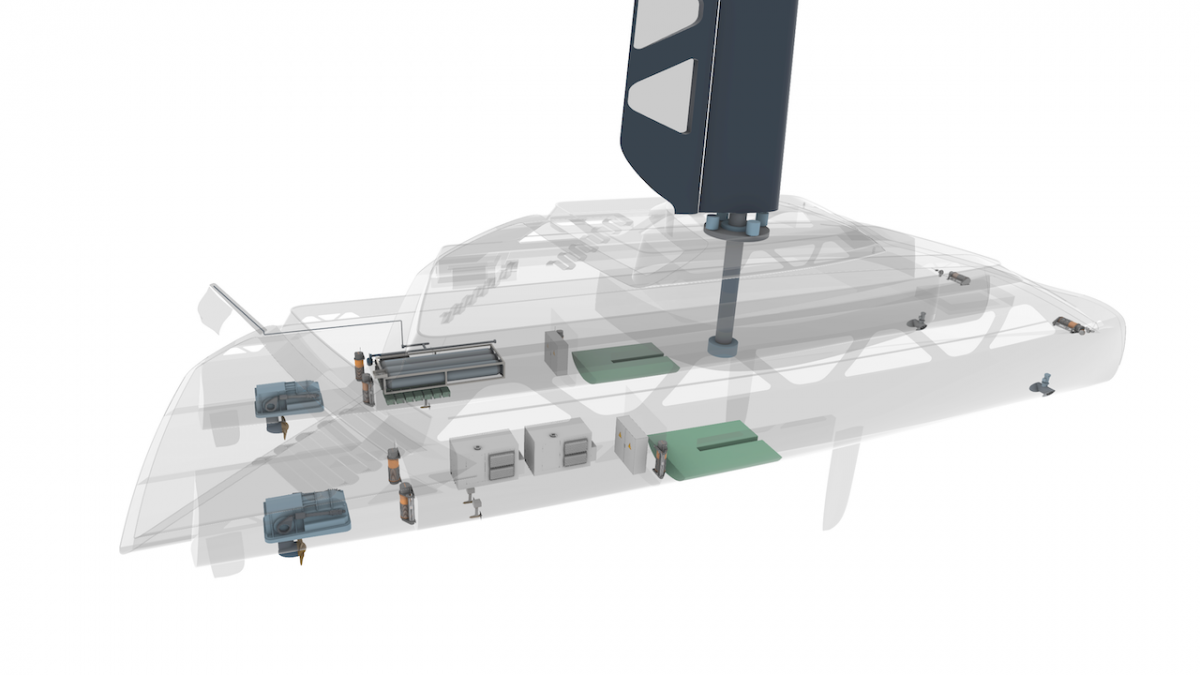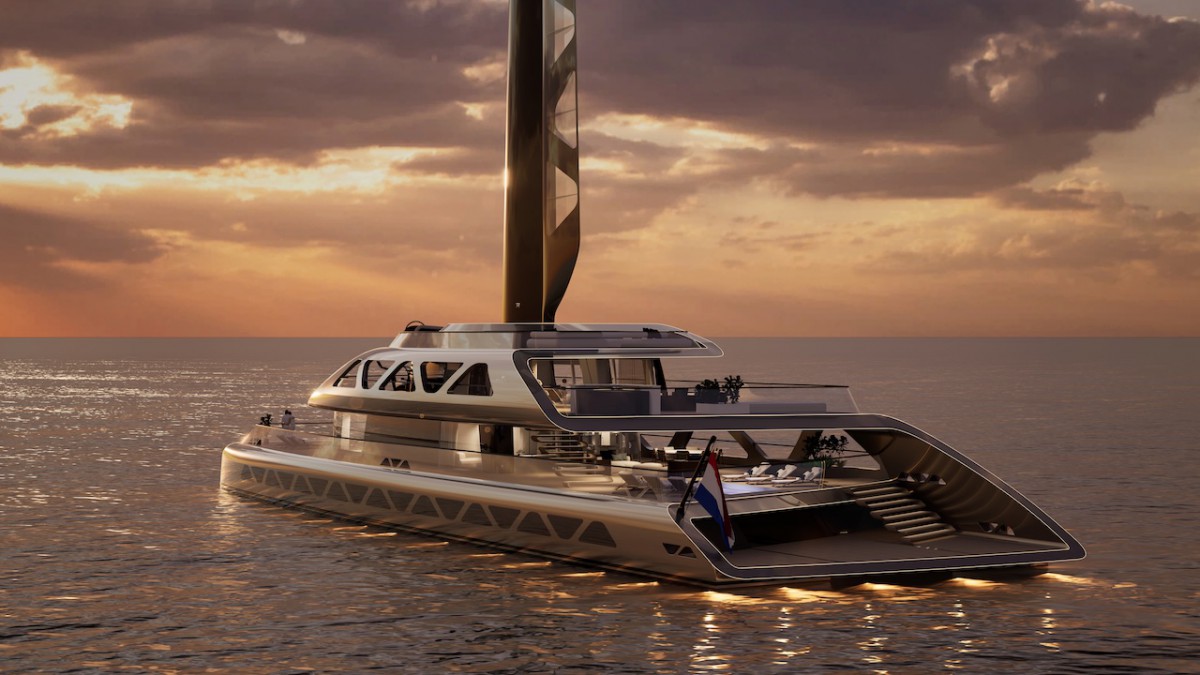Royal Huisman to trial improved wing sail and fuel cell systems
The Dutch shipyard’s new concept aims to bridge experimental clean-energy tech and real-world yacht design with a 50-metre wing-sail catamaran…

Royal Huisman has unveiled AERA, a 50-metre catamaran concept developed in collaboration with Rondal, Cor D. Rover Design and Artemis Technologies. The yard describes it as a platform “fit for tomorrow”, built to test wing sail and hybrid power technologies for yachts under 500gt.
Known for delivering what is widely considered the first hybrid superyacht, Ethereal, in 2009, the Dutch shipyard now aims to lower barriers to sailing and reduce emissions through automation and alternative energy systems.
The project builds on the yard’s 2024 Project Tidal Shift initiative, which focuses on ecological preservation through environmental, social, and governance practices. The concept extends that programme’s focus on practical applications of sustainability, turning research into prototype technologies that can be scaled across future builds.
“We know from research that sailing yachts don’t set the sails in full that much of the time, especially when they are going short distances between harbours,” says Jan Timmerman, CEO of Royal Huisman. “For some sailing superyachts, running lines, hoisting and adjusting all sails can take half an hour or more… for a short cruise to the next bay, we understand that it may not seem worthwhile.”
By contrast, Huisman says AERA’s automated wing sail would allow the captain to set a destination, engage automatic trim and be sailing in less than a minute. “Without the challenge of operating a conventional sailing system… it is basically as easy as operating a motoryacht,” adds Timmerman. “And, with just two degrees of maximum heel, it is comfortable and safe for guests to move around the decks while the yacht is underway.”

The concept centres on a 35-metre unstayed wing sail developed by Rondal and Artemis Technologies. Measuring 245 m², it can rotate 360 degrees and depower fully while upright. Rondal, Royal Huisman’s in-house composites and rigging specialist, led the development of the wing’s carbon structure and control system. Like the Dynarigs on Maltese Falcon and Black Pearl, and the furling rigs on Sailing Yacht A, it is designed to operate without shrouds or stays.
Huisman says the system is simpler and quieter than conventional rigs, with automated controls replacing sheets and winches. A two-year test programme of an eight-metre prototype preceded the scale-up. Artemis Technologies, founded by Olympic sailor Dr Iain Percy, has been adapting foiling and low-emission systems developed for commercial vessels to high-end leisure applications.
“We are about decarbonising the maritime sector,” explains Dr Percy, CEO of Artemis Technologies. He notes that while Artemis continues to consult on high-performance sailing, much of its current work focuses on electric foiling systems for commercial vessels. “Our shared passion here was to take away the barriers to using the force of the wind to decarbonise.”

When wind is insufficient, propulsion will come from retractable 500-kilowatt electric drive units, supported by a 580-kilowatt-hour battery bank, hydrogen fuel cells, hydro-generators and HVO-fuelled gensets. Each 500-kilowatt retractable pod is derived from the RPS units developed for 60-metre sailing yacht Sarissa, providing silent, emission-free manoeuvring when powered by the yacht’s batteries. Performance projections indicate a cruising speed of 12 knots, a 14-knot top speed and transatlantic range at 8 knots under power alone.
According to the yard, this arrangement can power hotel loads for up to 72 hours at anchor with zero emissions. The automation system also continuously balances wind and electric power, drawing on batteries, hydro-generators or a 60-kilowatt fuel cell to maintain efficiency. Huisman says the approach could cut emissions by up to 89 per cent when operating on HVO biodiesel.
The multihull design provides 694 m² of exterior space, comparable to that of a 60 to 70-metre motoryacht, while keeping the overall volume below 500gt. Cor D. Rover’s layout features asymmetrical decks and modular interior spaces linked by shaded walkways.
“The wing sail concept was really intriguing to me. And of course, I was delighted to help Royal Huisman,” says Rover. “During a couple of months of exchanging ideas, we were convinced that a catamaran was the perfect platform, both for a psychological approach to the fixed wing and for a cat’s inherent stability under sail. And on top of that, you get phenomenal decks.”

Externally, the lattice-style superstructure is inspired by modern bridge engineering, while the open framework reduces heat gain and onboard energy demand. The concept’s asymmetrical decks create shifting areas of light and shade, while separate “living modules” are linked by shaded walkways to reduce interior heat gain and energy use.
The concept emerges at a crucial time, when regulatory pressure and increasing owner interest continue to drive builders toward measurable carbon reductions. AERA could serve as a technical bridge between experimental design and scalable application within that conversation. And while Royal Huisman has not yet announced a contract, the Dutch shipyard will continue to use the platform as a research and development testbed for future builds.
Profile links
NEW: Sign up for SuperyachtNewsweek!
Get the latest weekly news, in-depth reports, intelligence, and strategic insights, delivered directly from The Superyacht Group's editors and market analysts.
Stay at the forefront of the superyacht industry with SuperyachtNewsweek
Click here to become part of The Superyacht Group community, and join us in our mission to make this industry accessible to all, and prosperous for the long-term. We are offering access to the superyacht industry’s most comprehensive and longstanding archive of business-critical information, as well as a comprehensive, real-time superyacht fleet database, for just £10 per month, because we are One Industry with One Mission. Sign up here.
NEW: Sign up for
SuperyachtNewsweek!
Get the latest weekly news, in-depth reports, intelligence, and strategic insights, delivered directly from The Superyacht Group's editors and market analysts.
Stay at the forefront of the superyacht industry with SuperyachtNewsweek



